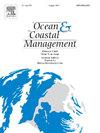三种普通小须鲸亚种的季节分布及季节间迁徙通道预测
IF 5.4
2区 环境科学与生态学
Q1 OCEANOGRAPHY
引用次数: 0
摘要
须鲸的大规模季节性分布在连接海洋生态系统方面发挥着关键作用,但也增加了它们在其活动范围内面临各种威胁的风险。有效保护这些物种需要对它们的迁徙路线和分布模式有明确的时间和空间知识,但这类信息在全球范围内仍然稀缺。这项研究解决了普通小须鲸(Balaenoptera acutorostrata)的这一挑战。本文首先收集了普通小须鲸的分布数据和相关环境变量,然后构建了小须鲸三个亚种的四季物种分布模型。基于SDM预测,确定了主要的夏季觅食栖息地和冬季繁殖栖息地。以秋季和春季生境适宜性指数为成本层,采用连通性分析方法划定了夏季到冬季、冬季到夏季的跨季节迁徙通道。结果表明,小须鲸分布的环境驱动因素在亚种和季节之间存在差异,这突出了在SDM研究中纳入更精细的分类单位和时间尺度的重要性。适宜的栖息地和迁徙通道主要位于沿海水域,现有的海洋保护区覆盖范围有限,并面临多种人为威胁。因此,未来的保护工作应优先考虑这些地区。小须鲸适宜栖息地和迁徙通道存在一定的季节性变化,需要采取动态管理策略。这项研究为普通小须鲸提供了重要的保护见解,并提供了适用于其他高度洄游海洋物种的方法框架。本文章由计算机程序翻译,如有差异,请以英文原文为准。
Predicting seasonal distribution and inter-seasonal migration corridors for three subspecies of common minke whales
The broad-scale seasonal distribution of baleen whales plays a critical role in linking marine ecosystems but also increases their exposure to diverse threats across their range. Effective conservation of these species requires temporally and spatially explicit knowledge of their migratory routes and distribution patterns, yet such information remains scarce globally. This study addresses this challenge for common minke whales (Balaenoptera acutorostrata). We first collected distribution data and associated environmental variables for common minke whales and then constructed species distribution models (SDMs) for its three subspecies across four seasons. Based on SDM predictions, key summer foraging and winter breeding habitats were identified. By incorporating autumn and spring habitat suitability indices as cost layers, connectivity analysis was used to delineate inter-seasonal migration corridors (summer to winter, winter to summer). Results indicate that environmental drivers of minke whale distribution vary among subspecies and across seasons, highlighting the importance of incorporating finer taxonomic units and temporal scales in SDM research. Suitable habitats and migration corridors are primarily located in coastal waters, where existing marine protected areas provide limited coverage, and face multiple anthropogenic threats. Therefore, future conservation efforts should prioritize these areas. There are some seasonal variations in minke whale suitable habitats and migratory corridors, emphasizing the need for dynamic management strategies. This study provides critical conservation insights for common minke whales and offers a methodological framework applicable to other highly migratory marine species.
求助全文
通过发布文献求助,成功后即可免费获取论文全文。
去求助
来源期刊

Ocean & Coastal Management
环境科学-海洋学
CiteScore
8.50
自引率
15.20%
发文量
321
审稿时长
60 days
期刊介绍:
Ocean & Coastal Management is the leading international journal dedicated to the study of all aspects of ocean and coastal management from the global to local levels.
We publish rigorously peer-reviewed manuscripts from all disciplines, and inter-/trans-disciplinary and co-designed research, but all submissions must make clear the relevance to management and/or governance issues relevant to the sustainable development and conservation of oceans and coasts.
Comparative studies (from sub-national to trans-national cases, and other management / policy arenas) are encouraged, as are studies that critically assess current management practices and governance approaches. Submissions involving robust analysis, development of theory, and improvement of management practice are especially welcome.
 求助内容:
求助内容: 应助结果提醒方式:
应助结果提醒方式:


